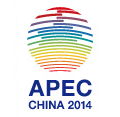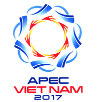John West
AUSPECC
Trade and regional integration must become more inclusive in the Asia-Pacific in order to win the support of public opinion, writes John West.
This note is inspired by the excellent press release, “Regional Solutions Needed for Global Challenges”, issued by the Pacific Economic Cooperation Council (PECC) following a recent conference in Jakarta which explored the challenges for next phase of regional cooperation and the role of the media in communicating the benefits of trade and regional integration.
Some of highlights of this press release were:
— “the importance of public process and communications to explain the benefits of trade to “men and women on the street” in very simple terms without which there will not be public support for regional economic integration” (Indonesia’s Minister of Trade, Mr. Thomas Lembong).
— “ASEAN policy leaders must engage a broader public, those who remain unaware of, and question the benefits of integration” (ASEAN Secretary-General Mr. Le Luong Minh).
— “media needs to do more to educate the public on the benefits of ASEAN economic integration” (former Trade Minister of Indonesia, Dr. Mari Pangestu)
— “the public is heavily engaged in public policy debate … the risk is having public policy driven by not what is right but what is popular. We need to make ‘what is right,’ ‘what is popular.’ Media’s role is very important in that sense.” (PECC Co-Chair Ambassador Don Campbell)
All of these points are eminently valid. But in the view of this author, who is also a member of the media, it is equally important to listen closely to public opinion and admit the possibility that public concerns about trade and regional integration may have some validity, or are at least worth close scrutiny. In particular, this author believes that until governments employ much stronger efforts to ensure that trade and regional integration are “inclusive”, public support will continue to be weak.
For example, many studies are now demonstrating that the adjustment processes provoked by trade liberalization and regional integration do not proceed as smoothly as our textbooks imagine. Capital and labor are not always swiftly reallocated to more efficient uses — especially in times of economic weakness. Remember that most trade models naively assume full employment.
It is also now clear that for advanced economies, trade and regional integration are drivers of inequality, especially in the US following the Japan and China shocks. And as trade and regional integration result in the rapid dissemination of new technologies, the “high-skilled bias” of these technologies also drives inequality the world over.
With a lot of Asia’s trade and regional integration taking place in special economic zones with little or no regulation, rather than through pure trade and investment liberalization, there are a vast array of policy weaknesses in the areas of labor rights, environmental protection, and governance more generally.
Trade and regional integration can also fuel corruption. As Global Financial Integrity has demonstrated, a large share of the massive illicit financial outflows from China this past decade or more have been effected through trade mis-invoicing. The availability of Asia’s tax havens of Hong Kong and Singapore only facilitate such illicit financial flows. And such corruption is another important factor behind Asia’s yawning inequality.
In short, there are many substantive reasons why public opinion should be concerned about the supposed benefits of trade and regional integration. It is not just a matter of communicating the right story to our ill-informed publics.
It is surely true that trade and regional integration increase total national income for all participating economies. But the distributional and other effects are important, and are a genuine and valid source for public concern.
Governments, econocrats and elites must listen closely and respond effectively to public concerns about trade and regional integration. This means taking education and training, and social safety nets much more seriously for displaced workers. It also means redistributing more of the benefits of trade and regional integration to people at the bottom of the ladder. This can be through various means including through establishing social welfare systems.
The domestic governance of trade and regional integration must also be improved, especially in the area of corruption and illicit financial flows. This must not be through arbitrary policies which target allegedly corrupt individuals. It must be through freedom of the press, freedom of association for civil society, independent anti-corruption watchdogs, and rule of law. This is a big agenda. But without this, Asia’s elites will never win the trust of public opinion regarding trade and regional integration.
In short, the main challenge is not so much one of communicating and convincing our ill-informed publics of the benefits of trade and regional integration. The real issue is establishing a new social contract with the public so that they can be convinced that trade and regional integration are a “fair deal”.
In other words, the moment has arrived for the Asia-Pacific to promote a new agenda of “inclusive trade and regional integration”.
[Cross-posted with permission from the author, Asian Century Institute]
Read more
Source: PECC News feed










